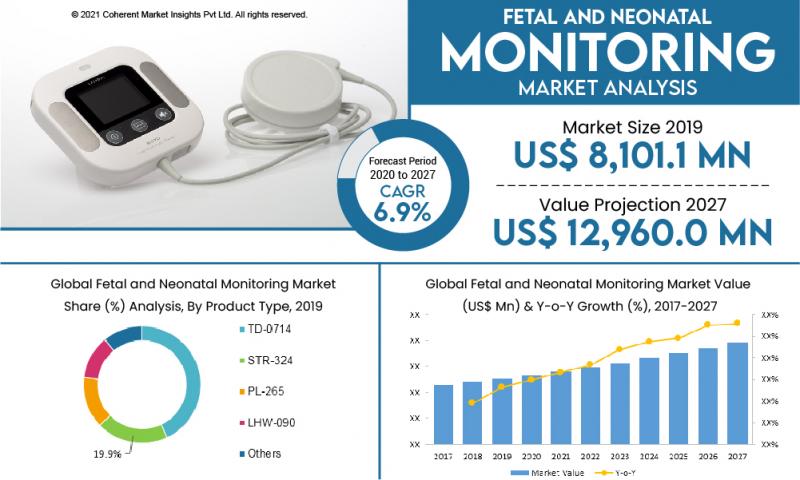The field of fetal and neonatal monitoring has witnessed significant advancements in recent years, aimed at ensuring the well-being of both mother and child during pregnancy and the critical first few weeks of life. Monitoring technologies and devices have evolved to provide healthcare professionals with more accurate and timely information, ultimately leading to better outcomes for newborns and their mothers.
In this blog post, we'll explore the latest developments in fetal and neonatal monitoring, highlighting the key trends and innovations shaping this vital aspect of healthcare.
- Non-Invasive Monitoring Techniques
One of the most notable trends in fetal and neonatal monitoring market is the shift towards non-invasive techniques. Traditional monitoring methods, such as fetal scalp electrodes and invasive blood sampling, pose certain risks and discomfort for both the mother and the baby. Non-invasive alternatives, like Doppler ultrasound, fetal heart rate monitoring, and transcutaneous bilirubinometry, are gaining popularity due to their safety and ease of use.
These non-invasive technologies provide valuable information without the need for invasive procedures, reducing stress and discomfort for patients while minimizing potential complications.
- Wearable Monitoring Devices
The rise of wearable technology has extended to the realm of fetal and neonatal monitoring. Expectant mothers can now use wearable devices to track their baby's heart rate, movements, and contractions from the comfort of their homes. These devices sync with smartphone apps, allowing parents to monitor their baby's health in real-time and share data with healthcare providers.
Wearable monitoring devices not only enhance convenience but also promote active involvement in maternal care, empowering parents to take a more proactive role in ensuring a healthy pregnancy.
- Artificial Intelligence and Machine Learning
Artificial intelligence (AI) and machine learning (ML) are making a significant impact on fetal and neonatal monitoring. These technologies analyze vast amounts of data to detect patterns and anomalies, providing healthcare professionals with early warning signs of potential issues.
AI-driven algorithms can predict preterm birth, identify fetal distress, and assess neonatal health with remarkable accuracy. This proactive approach enables timely interventions and improves outcomes for both mother and child.
- Telemedicine and Remote Monitoring
Telemedicine has become increasingly popular in the context of prenatal and neonatal care. Remote monitoring allows healthcare providers to track high-risk pregnancies and monitor premature infants from a distance, reducing the need for frequent in-person visits. This is particularly valuable in situations where travel may be challenging or where access to specialized care is limited.
Through telemedicine, medical professionals can review real-time data, provide guidance to patients, and intervene promptly when necessary, all while ensuring the safety and well-being of both mother and baby.
- Integration of Data
Efforts to enhance fetal and neonatal care include the integration of data from various monitoring sources. Electronic health records (EHRs) and interoperability between different monitoring devices and systems enable healthcare providers to access a comprehensive picture of a patient's health history, making informed decisions more accessible.
Conclusion
The fetal and neonatal monitoring market is evolving rapidly, with innovative technologies and approaches aimed at improving maternal and infant health. Non-invasive techniques, wearable devices, AI-driven analytics, telemedicine, and data integration are at the forefront of these advancements, ultimately contributing to healthier pregnancies and better outcomes for newborns.
As technology continues to advance, the future of fetal and neonatal monitoring holds the promise of even more precise, patient-centric, and accessible care, ensuring a healthy start to life for every child.
Read More….
Swine Respiratory Disease Treatment Market
